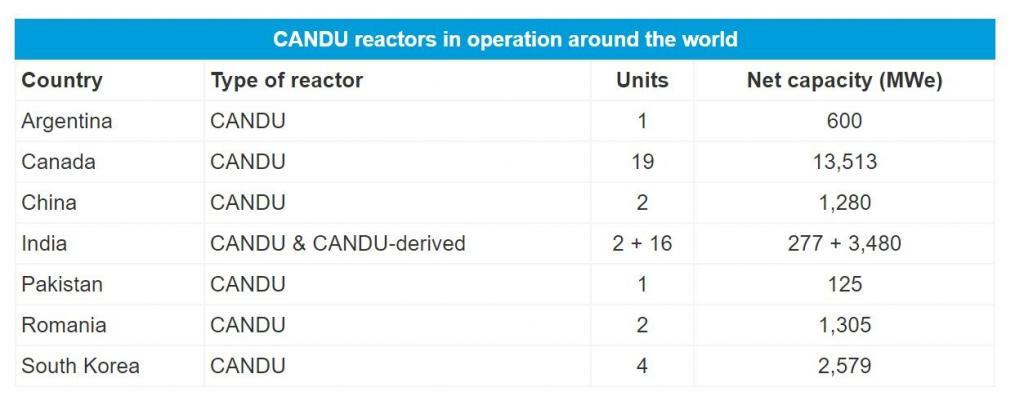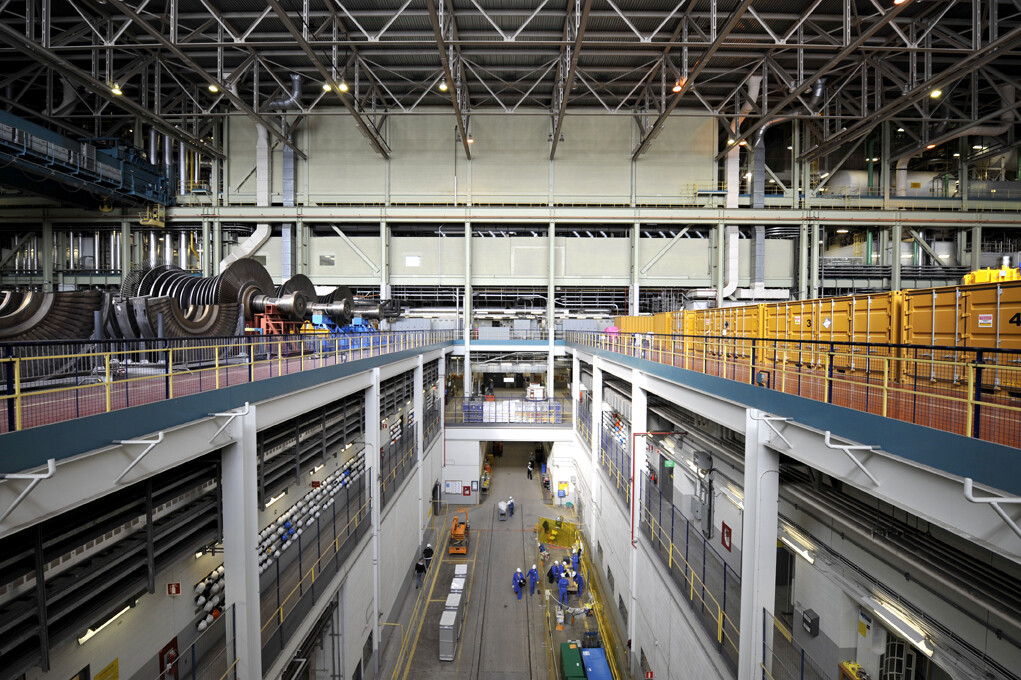How a Nuclear Reactor Works
Nuclear reactors produce heat by splitting atoms. That heat converts water into steam. That steam turns a turbine that spins a magnet which makes electricity flow to the grid.
How a nuclear reactor produces electricity
Nuclear reactors are sophisticated machines built to exacting engineering standards. Here’s an overview of how they produce electricity.
- Uranium is mined and converted into a fuel bundle. Operators load these fuel bundles into a nuclear reactor.
- Slow moving neutrons split apart the uranium nuclei, starting a nuclear chain reaction. This reaction keeps going because of careful engineering and can be stopped at any time by people working at the plant.
- The neutrons released from splitting the uranium nucleus travels very quickly, near the speed of light. Slow neutrons work best for splitting uranium atoms. The nuclear reactor has a special material called a moderator that slows neutrons down. While there are many materials that can act as a moderator, Canadian reactors use special heavy water, which is H2O with the normal hydrogen replaced by a heavier form ofhydrogen called deuterium. Nuclear professionals working at the reactor control the reactions by moving control rods in and out of the reactor core. These rods are made of materials that absorb neutrons to slow or stop fission as needed.
- To turn that heat into useful work (and then electricity), a coolant (heavy water in Canada), circulates through the reactor core to cool it down.
- That reaction turns water into high-pressured steam. The pressure pushes the steam to turn turbines.
- The energy of the spinning turbines becomes electricity by moving magnets within the electrical generator.
CANDU technology
Canadian nuclear power reactors are CANDU reactors – heavy water reactors developed by Canadian scientists and engineers. CANDU stands for Canada deuterium uranium, because it uses deuterium oxide (heavy water) as a moderator and coolant and uses natural (not enriched) uranium as a fuel.
Innovative Canadian engineering allows CANDU reactors to be refuelled while operating at full power! Most nuclear reactors must be shut down for refuelling.
Because Canada has a record of excellence in nuclear technology, other countries have built these Canadian-designed reactors. Almost half of CANDU reactors have been built in Argentina, China, India, Pakistan, Romania and South Korea. There are 34 CANDU reactors globally, 30 of which are operable.
CANDU reactors in Canada
There are 19 operable CANDU reactors at four nuclear generating stations in Canada.
The Bruce Nuclear Generating Station is the largest operating nuclear power facility in the world based on its eight reactors, which generate 6,288 MWe. It is located on the shore of Lake Huron, 190 km from downtown Toronto, Ontario, and first delivered power to the grid in 1976. It is operated by Bruce Power, but is owned by Ontario Power Generation (OPG)
The Darlington nuclear generating station is Canada’s second-largest nuclear facility by total energy output. Its CANDU reactors are owned and operated by OPG. Capable of producing up to 31 million MWh annually, the Darlington station powers up to 2.5 million households. All four Darlington units are undergoing mid-life refurbishment, so they can generate clean, reliable electricity for the decades to come.
The Pickering Nuclear Generating Station is Ontario’s smallest commercial nuclear facility. Its four CANDU reactors are owned and operated by OPG. Despite its smaller size, the Pickering station powers up to 2.5 million households.
Point Lepreau was the first CANDU 6 reactor to be licensed for operation, the first to achieve criticality and first to begin commercial operation. It is owned and operated by New Brunswick Power. This one nuclear reactor supplies almost one-third of the entire province’s electricity!

CANDU reactors in the world
Canada has exported CANDU reactors to Argentina, China, India, Pakistan, Romania and South Korea. There are 30 CANDU reactors in operation globally. As well, India developed the design and built 16 reactors that are based on the CANDU design.

